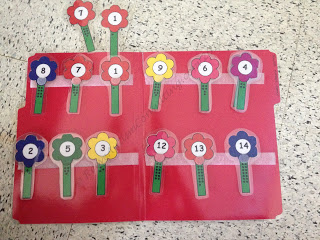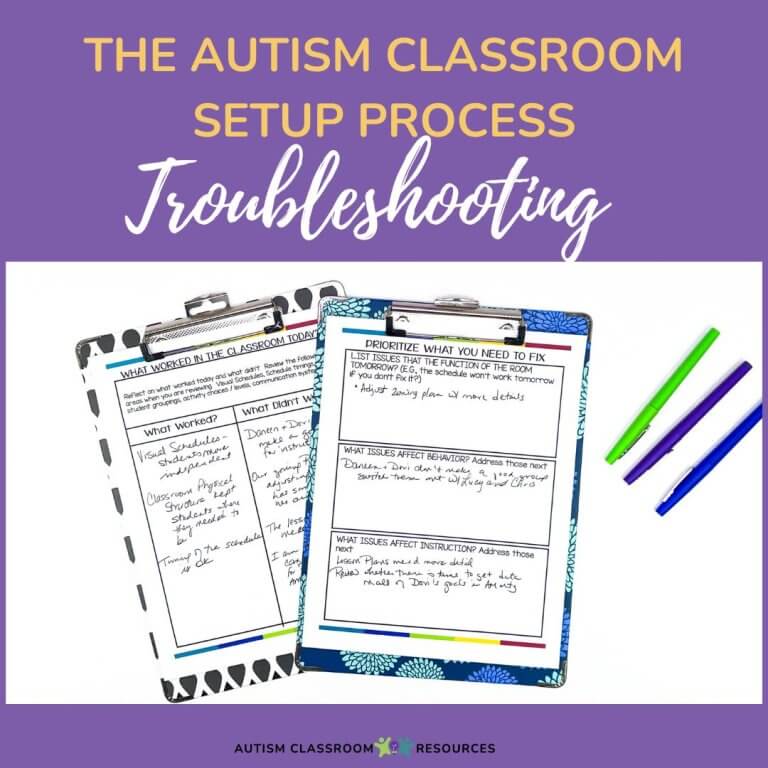Ever had a student who memorized the order of an activity? I certainly have since it’s common with many students with ASD. Instead of learning to add the numbers, instead they memorize the answer. This is fine if they are doing a worksheet one time, but harder if you want to try to reuse file folder activities with them that are really useful in independent work systems (for more thoughts on independent work systems, see this and this).
I covered this briefly in an earlier post on work systems, but thought it was important to review by itself as you think about making work tasks. For instance, this is one of the reasons I made Weather Kids, Weather Guy and Weather Chick so that they change each day with the weather (yes even in Florida the weather changes!).
You want to be careful when organizing your work materials so that you are sure that the student is attending to the thing you want (e.g., putting the numbers or alphabet in order, adding the numbers on the page) and not just memorizing where the items go (e.g., the first problem is 7, the next is 3) without understanding the task. This is true whether you are using the materials for explicit instruction or for structured work systems. For instance, if you have a task involving matching color words to colors (e.g., blue to the color blue), you want to avoid having the words written in the same color (e.g., the word blue in blue ink). If they are the same color, it’s likely the student is just matching the colors, not reading the word. This problem is created by a symptom of ASD called stimulus overselectivity which basically means that the individual picks up on non-key details in visual materials rather than the salient one you want them to attend to.
So, how do you avoid this problem? One way is to set up your materials so they change. Think about ways you can make file folders so that the order of the matching changes or the task itself changes. For instance, if you have a student who is working on reading comprehension, you can change out the story or material they read while keeping the questions consistent (e.g., Who is the main character?). For matching tasks, consider velcroing the bottom layer of the file folder rather than glueing it down so that you can move it over time. This also makes it possible to change the number of items the student has to complete so that the material can be used over a longer period of time as he or she is able to complete more of the task.








